What is the difference between the cards above? The best answer is, “About 51 years.”
In the early 1890s if a contractor needed a ditch dug, he had to hire a crew. He had to buy shovels, buckets, ladders, and probably dozens of tools that are now obsolete and forgotten.
But in the late 1940s, along came a fellow named Garfield Arthur “Gar” Wood. Mr. Wood was a native of Mapleton, Iowa. He was one of thirteen children. His father was a ferry operator on a Minnesota lake. Under the guidance of his father, “Gar” worked on boats from about age 13 until his late twenties. As a young man he developed a reputation as a championship motorboat racer. He was the first person to travel more than 100 miles-per-hour on water. He also fancied himself as an inventor.
In 1911, when he was 31, he invented a hydraulic lift designed to raise the bed of a dump truck carrying coal. His new machine emptied a truck in about 30 seconds and made him a millionaire.
That was the beginning. In the years that followed Wood’s inventive genius flourished. At one point, he held more United States patents than any other living American. The patent on the Buckeye #306 – Utility Ditcher (seen on the card above) was just one of hundreds. Wood’s ditcher could cut down to a depth of 5’ 6” at widths from 12” to 24” and be perfectly uniform. It could accomplish the work of sixty men in an eight hour day.
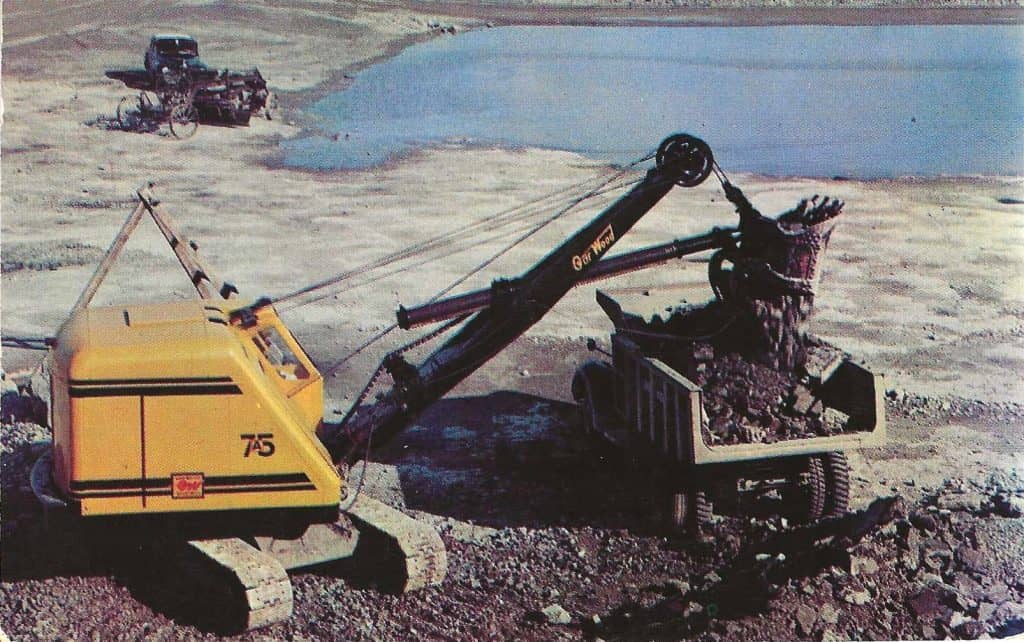
Another of Gar Wood’s inventions was the 3/4-yard shovel; he dubbed it the “75.” Based on its size – quite small for work in limited spaces, it boasted the capacity of three-quarters of a ton every eight minutes.
***
Building projects of any kind – like residences, commercial sites, factory buildings, schools and government or military bases – require the installation of utilities. And, no utility that meets modern code can be installed without digging holes in the earth. In recent times, the need for digging has been accomplished by using machinery instead of manpower. But before the installation of utilities begins, there should be some form of investigation that will methodize the digging in ways that will preserve safety for life and property.
When an excavation begins at a construction site it is important that the pre-digging examinations include the kinds of excavations needed and the proper equipment is on hand. According to the U.S. Occupational Safety and Health Administration, the depth and length of a hole determine its classification as a trench. A trench is defined as an excavation with a depth that is deeper than its width.
No ordinary hole in the ground is a proper trench. Trenching may appear straightforward but it is more complicated and labor-intensive than first imagined. If trenching is done improperly, it cannot be insured and will not properly protect the “lines” whether they are dry or wet utilities.
Yes, trenching is different for each kind of utility, whether wet or dry. Dry utilities are gas, telephone, fiber optics, and other communication lines. Wet utilities are sewer lines, storm drains, and water systems. The facts in most cases matter and today most of the trenching equipment in use is customized for the type of service it is trenching to protect. Even to the extent that certain cutting methods are used according to the kind of earth where the trench is being cut, i.e., rock, soil, loam, clay, gravel, or sand.
The type of soil is especially important because one cubic yard of gravel can weigh as much as 3,000 pounds, hence a trench cave-in could cause serious injury or death.
***
Garfield Wood died in Florida in 1971. He was 90 years old. At the time of his passing a Michigan journalist wrote, “Garfield Wood was a true to life Tom Swift, Jules Verne, and Frank Merriwell with a little bit of Horatio Alger thrown in.” Gar Wood was both practical and imaginative, truly a curious combination.
***
The legacy of Garfield Wood led to the manufacturing of heavy equipment at sites dotting the entire map of the United States and around the world.
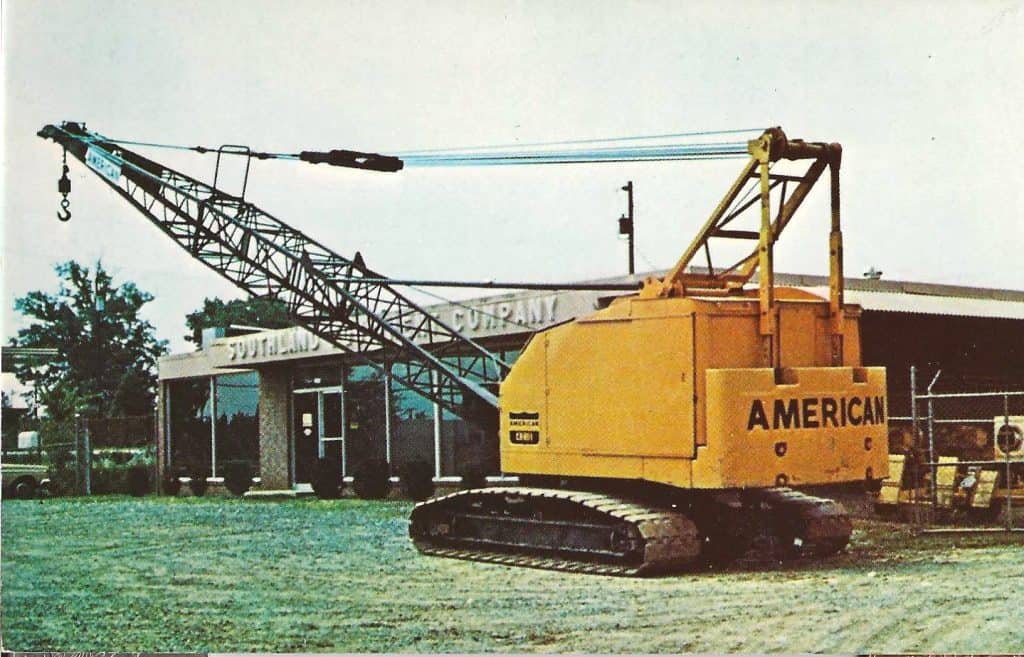
Names like Caterpillar, John Deere, Komatsu, Liebherr, Volvo, Hitachi, CASE, and Hyundai can be seen on machines like excavators, earth movers, asphalt compactors, steam and gasoline rollers, and soil compactors. Also, crawler dozers, wheel loaders, backhoes, cranes, and forklifts.
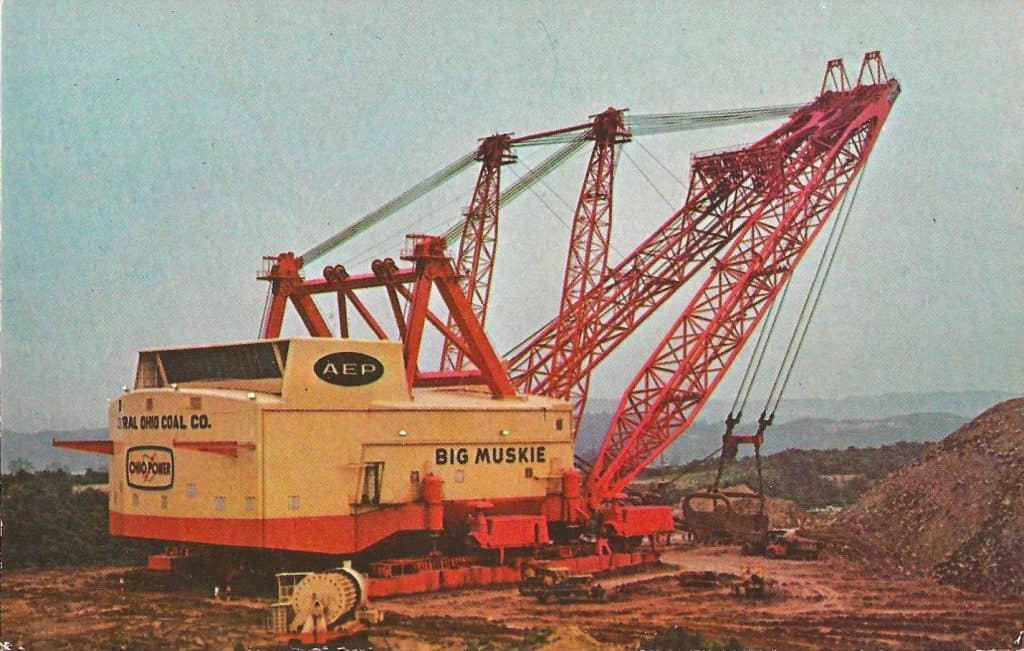
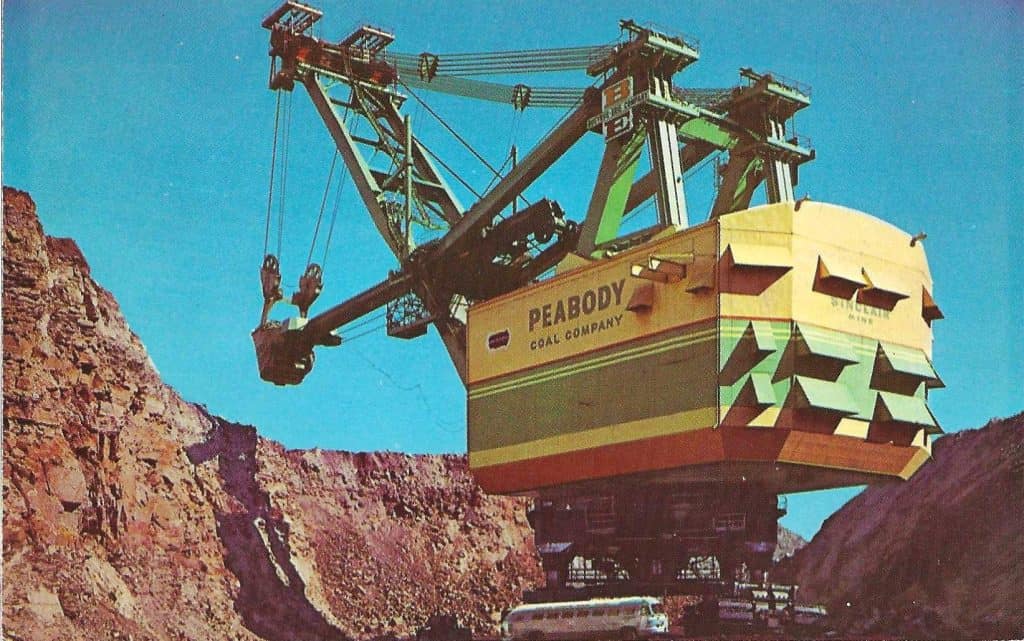

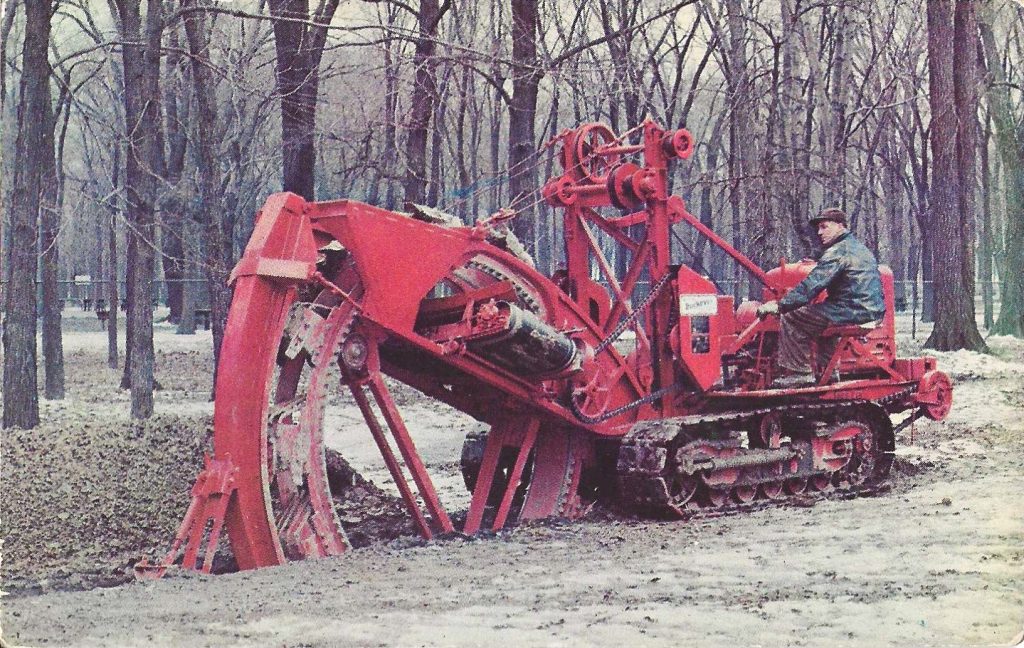
A fascinating article! Although it’s unlikely that I will start collecting ditcher cards myself.
This is a GREAT story and I so wish my Dad was still alive to read and enjoy this one too. He once met one or both of the Keller Brothers who invented the Bobcat, and I wish now I had asked him more about it. Thanks to Alan Upton for this one. It is all unusual, but so neat how the colorful postcard played a role in promoting and selling these heavy equipment earth-moving machines. Thanks
I was reminded by the “Big Muskie” card that my grandmother once took a bus trip with her group of “golden agers” to see that machine in action.
When I saw “Gar Wood” it reminded me of the beautiful speed boats that I remember seeing at Lake Tahoe, CA. So interesting to read about what other things Mr. Wood accomplished!; thank you.
fab post – down here in Florida we are proud to have equipment vu’s of early 20th century everglades drainage projects, flaglers oversea train construction and NASA moving and lifting equipment – truly that ‘necessity is the mother of invention’ – thanks for the post –
My fathers paycheck was derived from Gar Wood Industries NW Ohio location. When it closed down in the late ’60s he’d notched 17 years. Transfer to a PA operation was declined.
Great article! Worked in construction engineering a few years during my career. I now enjoy searching for construction equipment cards.